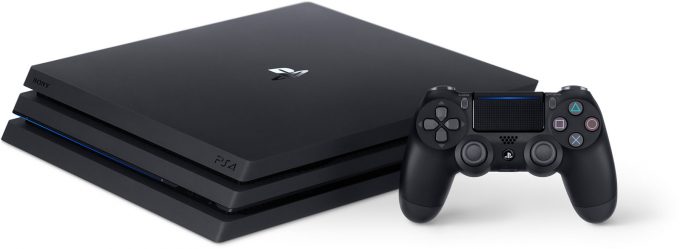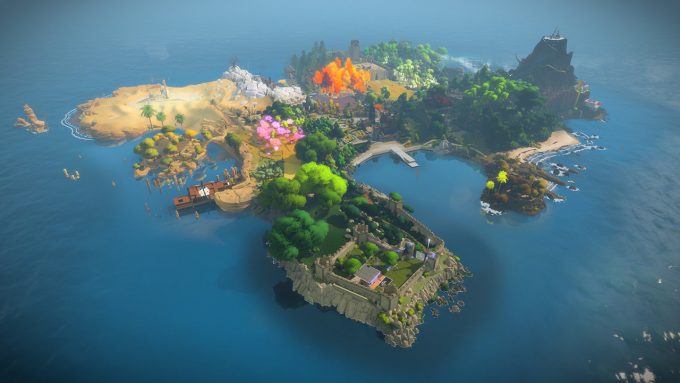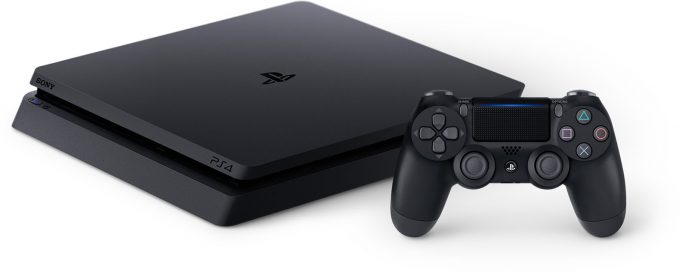- Qualcomm Launches Snapdragon 4 Gen 2 Mobile Platform
- AMD Launches Ryzen PRO 7000 Series Mobile & Desktop Platform
- Intel Launches Sleek Single-Slot Arc Pro A60 Workstation Graphics Card
- NVIDIA Announces Latest Ada Lovelace Additions: GeForce RTX 4060 Ti & RTX 4060
- Maxon Redshift With AMD Radeon GPU Rendering Support Now Available
Sony’s PS4 Pro: The Pros, The Cons & The Baffling

After months and months of waiting, Sony unveiled its newest, “highest-end” PlayStation 4 this week, the PS4 Pro. This launch proved that the rumor mill can be scarily accurate sometimes, but even so, there’s proven to be a lot to take away from the announcement. Most of it is good, but some of it is bad. And then we have the downright baffling. As you’d expect, we cover all of that here.
Page 1 – Introduction; PS4 Pro: The Good
I debated writing this article, but considering the fact that I can’t stop thinking about it, I guess it’s best that I do. As you’ve no doubt seen by now, Sony finally took the veil off of its PS4 Pro, the console formally known as PS4 Neo. With it comes some great news, some bad news, and some downright baffling news. I’ll tackle all of that here.
Earlier this year, I penned an article taking a look at what the PS “4.5” could be, or at least what I wanted it to be. While Techgage is almost entirely PC-focused, I’ve owned consoles all of my life, and while I was late to jump on the current-gen bandwagon, I ended up doing so with the PS4 last December. For the most part, I have few complaints outside of the obvious (eg: performance).
What I wanted most from the PS4 Pro is for developers to patch their already-released games, either to improve their performance (ideal) or visual quality. Perhaps even both. Fortunately, that is going to be happening, although we’re unsure at this point the extent of it. That’s just one perk of the new Pro model, though, so let’s get right into a look of what this thing is all about – good or bad.
The Good
It’s Faster!
This one is a no-brainer. We knew that the PS4 Pro was going to be faster, but I admit I didn’t realize it was going to be this much faster. The launch PS4 boasted about 1.8 TFLOPs of throughput, while early rumor put the PS ‘4.5’ at twice that: 3.6 TFLOPs. That would have been a tremendous gain to begin with, but Sony pushed things even further with a GPU clock boost, settling us at 4.20 TFLOPs. Blazing-fast for a console (NVIDIA’s GeForce GTX 1060 6GB is spec’d at 3.8 TFLOPs before GPU Boost).
4.20 TFLOP is a substantial boost, but it doesn’t come close to the required performance for ideal 4K gameplay. So what you should expect from this performance is either improved fidelity at 1080p, improved frame rates, or a combination of the two. Fortunately, as I’ll tackle in a moment, some developers are planning to give people the option, which to me is downright amazing – it’s something I’ve wanted but didn’t actually expect to happen.
The CPU and GPU are not the only components to get a boost with the PS4 Pro; the Wi-Fi has been upgraded to 802.11ac, and a USB 3.1 port has been added to the back. While this won’t increase performance, the PS4 Pro also upgrades the storage to 1TB, which is in itself a massive gain over the original 500GB. But… we’re still dealing with mechanical storage, which in most regards is slow. Oh so slow.
That said, Sony made the right decision to go with mechanical storage because an SSD would have increased the price by at least another $100. I hope that like the original PS4, Sony will let people upgrade their PS4 Pro to an SSD themselves (if interested in in-depth HDD vs. SSD testing on this, please let me know in the comments).
Old Games Can Be Patched/Updated For PS4 Pro
How I love the idea of this. As a massive Destiny fan, I crave the thought of being able to tear-it-up through Bungie’s created world in fluid 60 FPS, like I do Trials Fusion, Worms W.M.D, and a few others. PS4 Pro can make that possible, but it’s up to Bungie (or a game’s respective developer) to pursue it.
Over at NeoGAF, it’s been revealed that Rise of the Tomb Raider will be updated for the PS4 Pro, and when it is, it’ll introduce three different rendering options. For those with 4K screens, the game can be rendered at that resolution at 30 FPS. Those content to stick with 1080p will have two options: go all out on the detail, but retain 30 FPS performance, or reduce the detail to enjoy the fluidity of 60 FPS.
As I was penning this piece, I received an email from the developer of The Witness highlighting a similar move. Word is that Jonathan Blow is keen on releasing a patch at the launch of the PS4 Pro to introduce different rendering options, and these are creative.
If someone owns a 4K TV, the game will be run at 1440p and then be upscaled. This will be done to retain the 60 FPS performance the game currently delivers at 900p on the current PS4. However, while the gameplay will be upscaled, the UI will be native 4K. This might actually help with the impression that the game is actually rendered at 4K, although the gain from 900p to 1440p is significant in itself (a 2.5x increase in pixels).
Those sticking with 1080p will see even greater improvements: the game resolution will be boosted to 1080p, and so too will the MSAA value, from 2x to 4x. Again, this will retain 60 FPS performance.
As if that choice wasn’t enough, Blow is also hoping to add HDR support.
If many developers take the lead of both Rise of the Tomb Raider and The Witness, the PS4 Pro is instantly going to become alluring to many more people. Unfortunately, there is one caveat to be aware of, which I’ll tackle in “The Bad” section.
It’s Not That Much More Expensive Than A Regular PS4
The PS4 Slim is going to retail for $299, which is $100 less than the original cost when it first came out. Replacing that $399 price tag is the PS4 Pro, so for that extra $100, GPU performance is more than doubled. It’s hard to complain about that.
However, whether that performance boost is going to be worth it even still is going to depend on the person. If you’re rocking an original PS4 and are content with its performance, there’s no reason to upgrade – at least not right now. But there will come a time when PS4 Pro-optimized games are going to come out that might make an upgrade hard to resist.
I’ve seen a lot of complaint about the PS4 Pro coming “too soon”, but let’s face it: chances are you play your PS4 a lot, and chances are you will have felt that you’ve already gotten your money’s worth. I’ve only had my PS4 since last December, and I already feel like I’ve paid for it with my enjoyment. For that reason I am not too upset about buying the PS4 Pro; I’ll just sell off the one I have to help fund it.
Here’s another way I look at it: while it might suck for the PS4 to have been “replaced” so soon (it hasn’t actually been replaced), the PS4 Pro is going to be the best PS4 available until the launch of the next major release, a la: PS5. So if you do happen to upgrade right at launch, you can rest assured that you’ll be able to play the best-looking PS4 games until the end of the console’s development life.
It’s Still Infused With AMD Goodness
AMD won the console round with the Wii U, Xbox One, and PS4, and it continues that tradition by keeping its chips in the new PS4 Slim and PS4 Pro. It’s not entirely clear if the updated PS4 Slim features a brand-new APU, but considering the fact that power consumption improves by 28%, I’d wager that it does. In addition to the power improvements, the PS4 Slim is 30% slimmer than the original, and 16% lighter.
Meanwhile, AMD’s hardware for the PS4 Pro has more than doubled the performance of the original, which will no doubt make a huge improvement in future PlayStation VR titles. While Sony is making sure that no owner of the regular PS4 is without VR capabilities, we’re sure to see vast improvements made to VR titles for those who do own the Pro.
Support our efforts! With ad revenue at an all-time low for written websites, we're relying more than ever on reader support to help us continue putting so much effort into this type of content. You can support us by becoming a Patron, or by using our Amazon shopping affiliate links listed through our articles. Thanks for your support!









